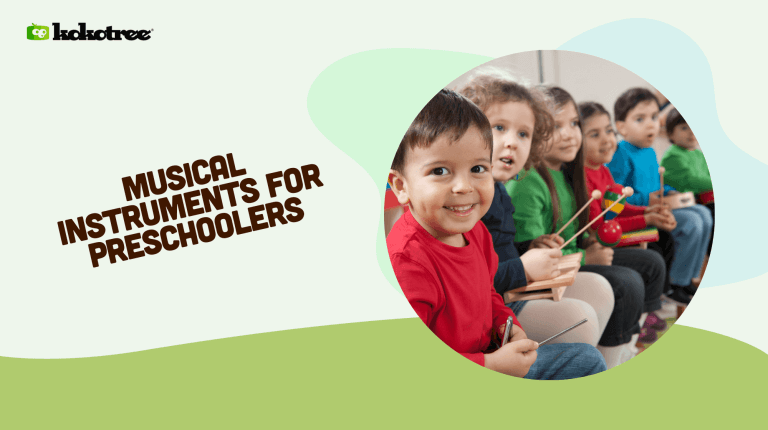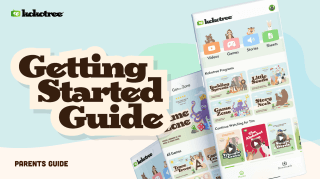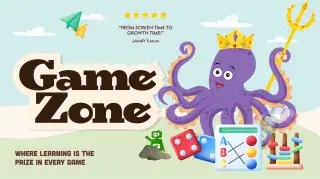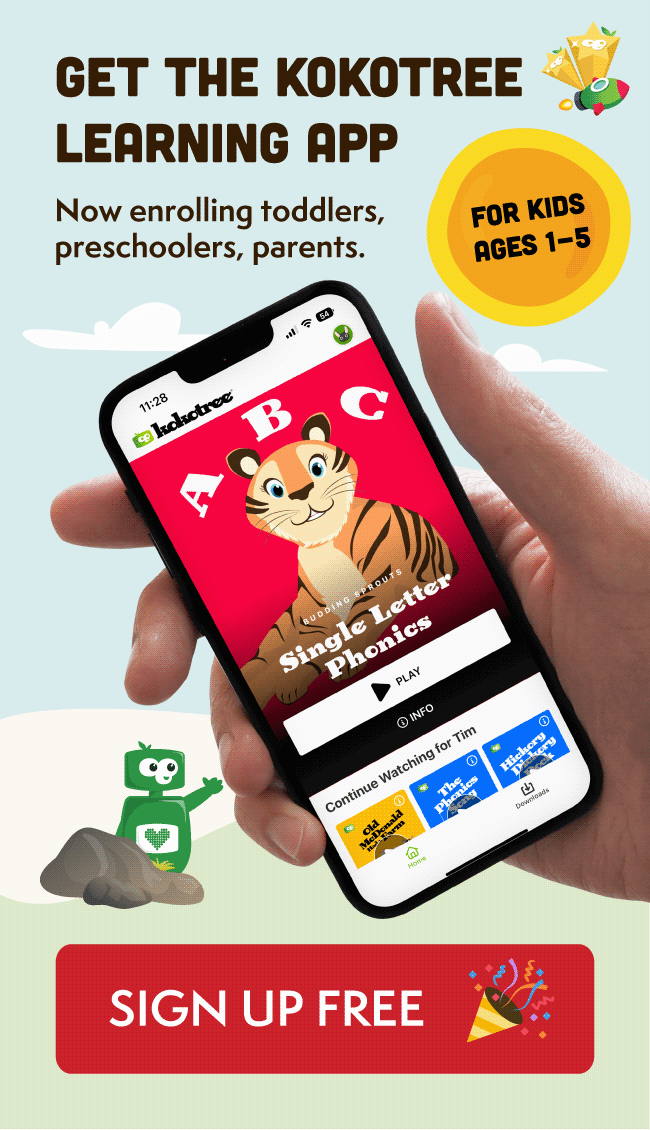

Welcome to our blog post about musical instruments for preschoolers! As a parent, you know how important it is to keep your little one engaged and entertained. Research shows that introducing children to music at a young age has many benefits, such as improving language, creativity, and social skills. In this post, we’ll explore various musical instruments, fun activities, and art projects that can help introduce your preschooler to the wonderful world of music in an enjoyable and exciting way. So let’s dive in and discover some great ways to make learning both educational and fun for your little one!
Preschoolers can explore a variety of musical instruments, such as percussion instruments (drums, tambourines, maracas), string instruments (ukulele, mini-guitar), and wind instruments (recorders, harmonicas). Introducing these instruments through engaging activities, games, and art projects helps make learning enjoyable and enhances their cognitive, emotional, and social development.
Early childhood education is a critical time for fostering growth and development in children, and music plays a vital role in this process. In addition to promoting cognitive abilities, music exposure helps enhance motor skills, creativity, and emotional intelligence. By introducing musical instruments to preschoolers, you are enriching their lives and setting them up for future success.
When it comes to finding the right musical instruments for preschoolers, it’s essential to select age-appropriate options. Smaller instruments that are easy to hold and play will help young children feel confident and excited about learning music. Here are some suggestions for suitable instrument categories:
Drums, tambourines, maracas, and other percussion instruments are perfect for little hands. They are simple to use and allow children to explore rhythm and beat at their own pace. As a bonus, percussion instruments often double as fantastic sensory toys!
Ukuleles and mini-guitars are great choices for young children, as they’re designed with smaller hands in mind. These string instruments teach kids about pitch and melody while helping to develop fine motor skills.
Recorders, harmonicas, and small flutes are engaging options for introducing wind instruments to preschoolers. These instruments encourage breath control, which can improve speech development and overall lung capacity.
There’s no shortage of entertaining ways to engage your child with musical instruments. The key is to create a fun, supportive environment that encourages exploration and creativity. Here are some ideas to help you get started:
Create a sensory bin filled with a variety of musical instruments and other objects that make noise. Encourage your child to explore the bin and discover the different sounds each object makes. This activity also builds curiosity and fine motor skills.
Choose a favorite children’s book and have your preschooler create a musical soundtrack for the story. They can use their instruments to represent different characters, actions, or emotions in the plot, connecting the power of music to storytelling.
Set up a painting station with paper, paint, and brushes. Play different types of music, from classical to hip-hop, while encouraging your child to paint what they “see” in the music. This activity helps build listening skills, creativity, and artistic expression.
Incorporating games into your child’s musical education can make the process even more enjoyable. Here are some fun games to play with a group of preschoolers using musical instruments:
Designate one child as the “seeker” and have the others hide with their musical instruments. The hidden children periodically play their instruments as hints for the seeker, helping them locate their friends. This game encourages listening skills and teamwork.
Similar to musical chairs, have the children walk, dance or march in a circle while music plays. When the music stops, each child picks up a nearby instrument and plays it until the music begins again. This game helps familiarize children with various instrument sounds and improves their ability to recognize musical cues.
Introduce the concept of drawing sounds by combining musical instruments with Pictionary. Divide the children into teams, and have one team member “draw” a picture by playing an instrument while the rest of the team guesses what the drawing represents. This game enhances creativity, collaboration, and communication skills.
By incorporating art projects, children can further explore the world of musical instruments and their sounds. Here are some creative ideas to try:
Have children cut out pictures of musical instruments from magazines, or print images from the internet, and create colorful collages. This project allows children to familiarize themselves with various instruments and practice their fine motor skills through cutting and gluing.
Use large sheets of paper and have preschoolers paint musical notes, instruments, or scenes inspired by a favorite song. They can use their fingers, brushes, or even different instruments as unique painting tools!
Gather supplies such as empty cans, plastic bottles, beads, and rubber bands to create simple homemade instruments. Kids love making their instruments, and it teaches them about repurposing everyday items into fun, creative tools.
With today’s technology, there’s a wealth of resources just a tap away. Using a learning app for toddlers, you can introduce your preschooler to new sounds and instruments anytime, anywhere. Look for apps that encourage exploration, creativity, and interaction with high-quality sounds and engaging graphics. These apps can be a valuable addition to your child’s musical education toolkit.
Taking the time to introduce musical instruments to your preschooler through engaging activities, games, and art projects can make a lasting impact on their development. By encouraging exploration and fostering curiosity, you are not only giving your child the gift of music but also building essential skills that will serve them well throughout their lives.
Besides introducing musical instruments to preschoolers, there are other ways you can incorporate music into your child’s day-to-day routine. As part of a well-rounded toddler education, music can foster a lifelong love for learning and help your little one discover new interests. Here are some additional suggestions to make the most of music in your preschooler’s life:
Every music genre has unique features and aspects that can engage preschoolers. Play preschool songs from a range of genres, such as classical, jazz, rock, pop, and world music, to spark their curiosity and broaden their musical horizons. This exposure helps children appreciate different cultures, styles, and sounds.
Look for family-friendly music events in your community, such as concerts, musical theater, or performances by local music groups. Attending live music events can provide an exciting and inspiring experience for your preschooler while allowing them to see and hear different instruments up close.
Get together with other families and plan musical playdates. These gatherings can include instrument jam sessions, sing-alongs, or even a small talent show where kids can perform their favorite songs. Not only will your child learn more about music, but they’ll also build social skills and friendships.
Ensure that music is a regular part of your preschooler’s home environment by always having instruments and music resources within easy reach. Set up a dedicated space where your child can explore and practice, keeping it organized and clutter-free. Use colorful posters or illustrations to make the area more inviting, and consider including books or fact sheets about various musical instruments.
Parents play a crucial role in their child’s musical development. Set aside time to actively participate in your toddler’s musical activities, such as singing together, dancing, or playing instruments. Your involvement and enthusiasm will reassure and encourage your child, making the experience more enjoyable for both of you. This bond will strengthen your relationship while instilling a sense of confidence and excitement about learning music.
By incorporating these suggestions into your preschooler’s musical education, you will foster a love for music and help develop essential skills critical to a successful learning experience. Remember to keep a positive and supportive attitude as your child explores and discovers the joys of music, and you’ll be well on your way to setting the stage for a lifetime of success!
We understand that you may have some questions about introducing musical instruments to preschoolers, so we’ve compiled this FAQ section to help address common concerns and provide clarity. These questions and answers will guide you in your musical journey with your little one!
Preschool years (ages 3-5) are an excellent time to introduce your child to musical instruments. Early exposure to music can improve cognitive, emotional, and social development while building a foundation for a lifelong love of music.
Drums, tambourines, maracas (percussion instruments), ukuleles, mini-guitars (string instruments), and recorders, harmonicas (wind instruments) are particularly suitable for preschoolers. They are designed to be easy to hold and play for young children.
Preschoolers often display an interest in music through singing, dancing, or even creating their tunes. If your child shows curiosity about musical instruments or enjoys making sounds using household objects, they may be ready to explore music further.
Consider your child’s interests, physical abilities, and availability of instruments. Look for instruments that are age-appropriate, easy to hold and play, and encourage exploration and creativity.
Create a supportive, fun environment for practicing by setting up a dedicated space at home, establishing a regular routine, and actively participating in your child’s music activities. Be patient and offer words of encouragement and praise to keep your preschooler motivated.
Short, regular sessions are best for preschoolers. Aim for 10-15 minutes of daily practice, gradually increasing the duration as your child becomes more comfortable and confident with their instrument.
Yes, research shows that learning a musical instrument can enhance cognitive skills, such as memory, attention, and problem-solving abilities. It may also improve language, math, and reading proficiency.
It’s natural for young children’s interests to fluctuate over time. Try introducing different activities, games, or art projects that incorporate their instrument, or explore other musical genres to reignite their passion. Always maintain a positive, encouraging attitude.
Both group and private lessons have their merits. Group lessons can be more engaging and foster social skills, while private lessons offer individualized attention and tailored instruction. Consider your child’s learning style, social preferences, and available resources when making your decision.
Yes! There are many learning apps for toddlers that introduce musical concepts and instruments in a fun, interactive way. These apps may be a valuable supplement to your child’s musical education, but should not replace hands-on experience with real instruments.
Absolutely! You can learn alongside your child or seek out resources such as online tutorials, apps, or music classes specifically designed for preschoolers. Your support, encouragement, and enthusiasm will significantly impact your child’s learning experience.
Learning a musical instrument can improve cognitive, motor, social, and emotional development. It also fosters creativity, self-expression, and discipline while instilling a greater appreciation and understanding of music and culture.
Establish dedicated practice times, play different music genres during meals or car rides, and include music-related activities such as sing-alongs, dancing, or storytime with background music. Make music a natural, enjoyable part of your preschooler’s day-to-day life!




